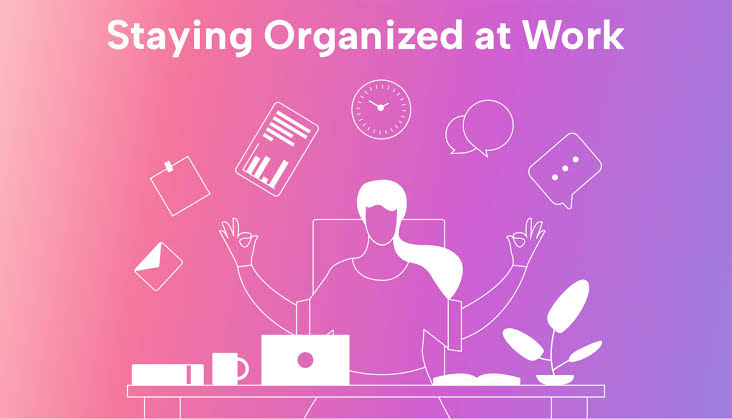In a world full of distractions and fast-moving time, finding easy ways to be productive is very important. Whether you are a student, business owner, or work from home, using your time well can help you succeed and feel calm. In 2025, with more tools, apps, and methods available, being productive means working smarter, not harder.
The key lies in intentional strategies that help you prioritize better, stay focused longer, and achieve more with less effort. From morning routines to tech-powered shortcuts, productivity hacks can transform your day from chaotic to controlled.
Establishing a Morning Routine
A productive day often begins with a powerful morning routine. Starting your morning with intention helps set the tone for the rest of the day and reduces decision fatigue.
Some components to consider include:
- Waking up early – Giving yourself time before the demands of the day begin allows for reflection and planning.
- Hydrating immediately – This jumpstarts your metabolism and refreshes the brain.
- Exercise or stretching – A quick workout enhances mood and focus.
- Journaling or goal setting – Writing out top priorities keeps you on track.
- Avoiding screens for the first 30–60 minutes – This prevents reactive habits and preserves mental clarity.
A consistent routine doesn’t have to be complicated—just intentional and consistent.
Time Blocking and Scheduling
Time blocking is one of the most effective productivity hacks. It involves dividing your day into chunks of focused time dedicated to specific tasks, rather than working in a scattered way.
Here’s how to do it:
- Start by listing all your tasks
- Group similar tasks together (batching)
- Assign time blocks for deep work, breaks, and admin work
- Use a digital calendar or planner to visualize your day
- Stick to the blocks and adjust only when necessary
This approach minimizes multitasking and helps you stay focused on one thing at a time, boosting both efficiency and output.
The 80/20 Rule (Pareto Principle)
The 80/20 rule suggests that 80% of your results come from 20% of your efforts. Identifying and focusing on the tasks that offer the highest return on investment is crucial.
To apply this principle:
- Review your to-do list and identify the most impactful tasks
- Focus your best energy on completing those tasks first
- Delegate, automate, or postpone low-value tasks
- Regularly assess and refine your priorities
This mindset shift helps you cut through the noise and focus on what truly matters.
Utilizing the Pomodoro Technique
The Pomodoro Technique is a simple yet powerful productivity method that alternates work and rest periods.
Steps to implement it:
- Set a timer for 25 minutes (a “Pomodoro”)
- Focus completely on one task until the timer rings
- Take a 5-minute break
- After four Pomodoros, take a longer break of 15–30 minutes
This method keeps your brain fresh, combats burnout, and enhances focus through short, intense bursts of work.
Decluttering Your Workspace
Your environment significantly affects your productivity. A cluttered space can lead to mental distractions and stress. Optimizing your workspace creates a more conducive atmosphere for focused work.
Tips for improvement:
- Remove unnecessary items from your desk
- Organize digital files and folders weekly
- Use noise-cancelling headphones or calming background music
- Add elements like natural light, plants, or ergonomic furniture
Even small adjustments can drastically improve focus and motivation.
Leveraging Technology for Efficiency
Tech tools can either be a distraction or a major productivity boost—it all depends on how you use them. Choose platforms that help automate repetitive tasks, organize your schedule, and streamline communication.
Popular tools include:
- Notion or Evernote – for note-taking and planning
- Trello or Asana – for project management
- Focus apps like Forest or Freedom – to block distractions
- Google Calendar – for time blocking and reminders
- Zapier or IFTTT – to automate tasks between apps
When used wisely, tech becomes a personal assistant, freeing up time for high-level thinking.
Saying No and Setting Boundaries
One often overlooked hack is the power of saying no. Overcommitting drains time, energy, and mental space. Setting boundaries allows you to protect your focus and prioritize your own goals.
How to implement:
- Be clear about your non-negotiable work times
- Say no to tasks that don’t align with your priorities
- Avoid back-to-back meetings—leave buffer time
- Communicate your availability clearly with team members
Respecting your own time encourages others to do the same.
Daily Reviews and Reflections
A quick review at the end of each day can significantly improve how you plan and execute tasks. Reflecting helps you identify what worked, what didn’t, and what needs adjustment.
Include these in your review:
- Top 3 wins of the day
- Tasks left incomplete and why
- Lessons learned or habits that need change
- Plan for tomorrow’s priorities
Daily reflection is the bridge between productivity and continuous growth.
Prioritization Matrix: The Eisenhower Box
This classic tool helps you sort tasks into four categories:
- Urgent and important – Do immediately
- Important but not urgent – Schedule
- Urgent but not important – Delegate
- Neither urgent nor important – Eliminate
Using this matrix daily or weekly brings clarity and structure to decision-making, ensuring you invest energy where it matters most.
Conclusion
Maximizing your time doesn’t mean doing more—it means doing what matters most, better. Productivity hacks are not about squeezing every second but about making conscious choices that align with your goals and values.
With the right routines, tools, and mindset, you can take control of your schedule, reduce overwhelm, and unlock higher levels of achievement. In 2025 and beyond, intentional productivity isn’t just a strategy—it’s a lifestyle that leads to clarity, success, and satisfaction.



